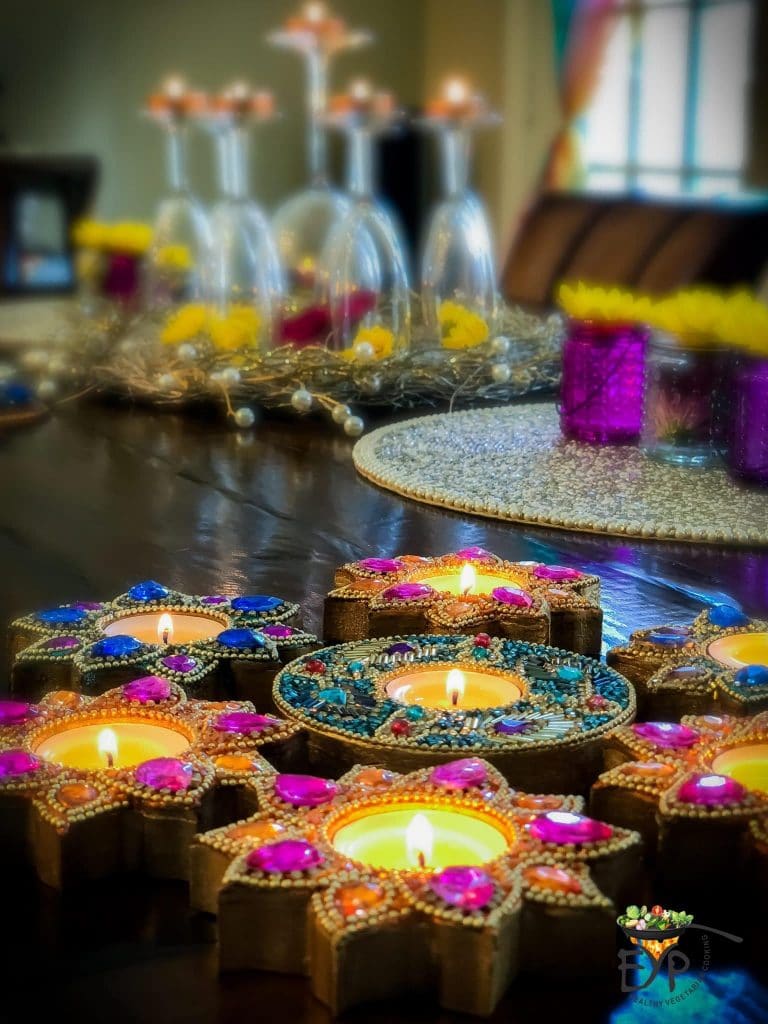Diwali Decoration Ideas and When to Celebrate

Diwali, also known as Deepavali, the Festival of Lights, is one of the most widely celebrated festivals among Hindus, Sikhs, and Jains. It’s a time for families and friends to come together, to celebrate the triumph of light over darkness, good over evil, and knowledge over ignorance. This year, when planning your Diwali decorations and festivities, you'll find a wealth of ideas to make your home radiate with warmth and joy. Here are some enchanting Diwali decoration ideas and a look at when you should celebrate this joyous festival.
Understanding Diwali

Before diving into the decorations, understanding the essence of Diwali is key. The festival spans five days, each with its own significance:
- Dhanteras: The day to purchase precious metals, particularly gold and silver, believed to bring good luck and wealth.
- Naraka Chaturdashi (Chhoti Diwali): Commemorates Lord Krishna’s victory over the demon Narakasura.
- Diwali (Laxmi Puja): The main day for celebration, where Goddess Laxmi, the deity of wealth, is worshipped.
- Govardhan Puja or Annakut: Celebrates Krishna lifting Govardhan Hill to protect the villagers from the wrath of Indra.
- Bhai Dooj: Honors the bond between siblings, similar to Raksha Bandhan.
Diwali Decoration Ideas

To truly capture the spirit of Diwali, transforming your home into a spectacle of light and color is essential. Here are some ideas:
Illumination with Lights

- Diya Lamps: Traditionally made from clay, these oil lamps are the quintessential symbol of Diwali. Place them around your home, especially in rows along paths or walls.
- Fairy Lights: String up fairy lights to add a magical touch. They can be used to wrap around railings, trees, or window frames.
- Candles: Use scented candles for an aromatic ambiance or LED candles for safety.
Crafting Rangoli

Rangoli designs made from colored powders, petals, rice, or other natural materials can brighten your home’s entrance. Here are some tips:
- Start with simple, geometric patterns if you’re new to rangoli making.
- Use stencils for more intricate designs.
- Embed diyas within the rangoli for a glowing effect.
Decorate with Flowers

Flowers add a natural and traditional touch:
- Marigold garlands can be draped around doorways and windows.
- Rose petals can scatter across rangoli for an elegant look.
- Create floral centerpieces or floating arrangements in bowls or trays.
Festive Wreaths and Torans

Welcome guests with traditional torans, decorative hangings at the front door:
- Craft wreaths from dried leaves, flowers, or festive materials like sequins and beads.
- Use artificial flowers for a long-lasting decor piece.
Entrance Decoration

The entrance sets the tone for your celebration:
- Create a mandap or temporary shelter made of fabric, often at the entrance to welcome guests.
- Hang traditional lanterns or lamps from the roof.
- Add a puja thali or altar at the entrance for welcoming Goddess Laxmi.
Paper Crafts and DIY Projects

Involve the whole family in decoration:
- Paper lanterns made from colorful paper can add an old-world charm.
- Create paper flowers or pom poms for hanging decor.
- Paint or decorate cardboard cutouts with festive themes.
💡 Note: When decorating, especially with candles or lamps, ensure safety first. Keep flammable materials away from open flames, and always supervise if children or pets are around.
Eco-friendly Decorations

Modern Diwali celebrations can lean towards sustainability:
- Use eco-friendly diyas made from clay that can be reused.
- Opt for LED lights or solar-powered lamps.
- Plant flowers or use potted plants for decorations to be reused next year.
When to Celebrate Diwali

Diwali falls in October or November each year, specifically on the 15th day of Kartik in the Hindu calendar, which is in the month of Ashwin. Here’s a look at when to prepare:
Preparation

- Weeks Before: Begin shopping for new clothes, cleaning your home, and buying decorations.
- Days Before: Start decorating your home, cooking sweets and savories, and perhaps inviting guests or making plans for family gatherings.
The Five Days of Diwali

Each day holds significance:
| Day | Name | Celebration |
|---|---|---|
| 1 | Dhanteras | Buy gold, silver, utensils, or clean homes for Laxmi’s arrival. |
| 2 | Naraka Chaturdashi | Perform prayers, light diyas, and burst fireworks. |
| 3 | Diwali (Laxmi Puja) | Worship Goddess Laxmi, offer prayers, fireworks, and feasting. |
| 4 | Govardhan Puja | Make offerings, prepare special dishes, and worship. |
| 5 | Bhai Dooj | Siblings meet, exchange gifts, and celebrate their bond. |

Diwali brings us all closer, celebrating the victory of light and knowledge. Decorations, whether traditional or modern, bring the festive spirit to life, and understanding the dates helps us prepare better for this vibrant occasion. Embrace the spirit, share the joy, and light up your life with the warm glow of Diwali.
What is the best time for Diwali celebrations?

+
The main day for Diwali is during Laxmi Puja, typically in the evening. However, the celebrations span five days, so any of these days are excellent times to celebrate, with peak festivities on Diwali day.
Can Diwali be eco-friendly?
+Absolutely! Opt for sustainable decorations like clay diyas, LED lights, and natural rangoli materials. Additionally, promote eco-friendly fireworks or limit firework displays.
Are there specific colors associated with Diwali?
+Traditionally, red, yellow, and green are considered auspicious for Diwali. However, the palette has evolved to include all vibrant colors to symbolize joy and festivity.
What are some safety tips for Diwali celebrations?
+Ensure electrical wires and lights are safe to prevent electrical hazards. Keep children away from fireworks and candles, and always have water or fire extinguishers nearby during firework displays.
How can non-Hindus celebrate Diwali?
+Non-Hindus can join in by decorating their homes, participating in community celebrations, enjoying Diwali sweets, and learning about the festival’s significance. It’s a great opportunity for cultural exchange.



